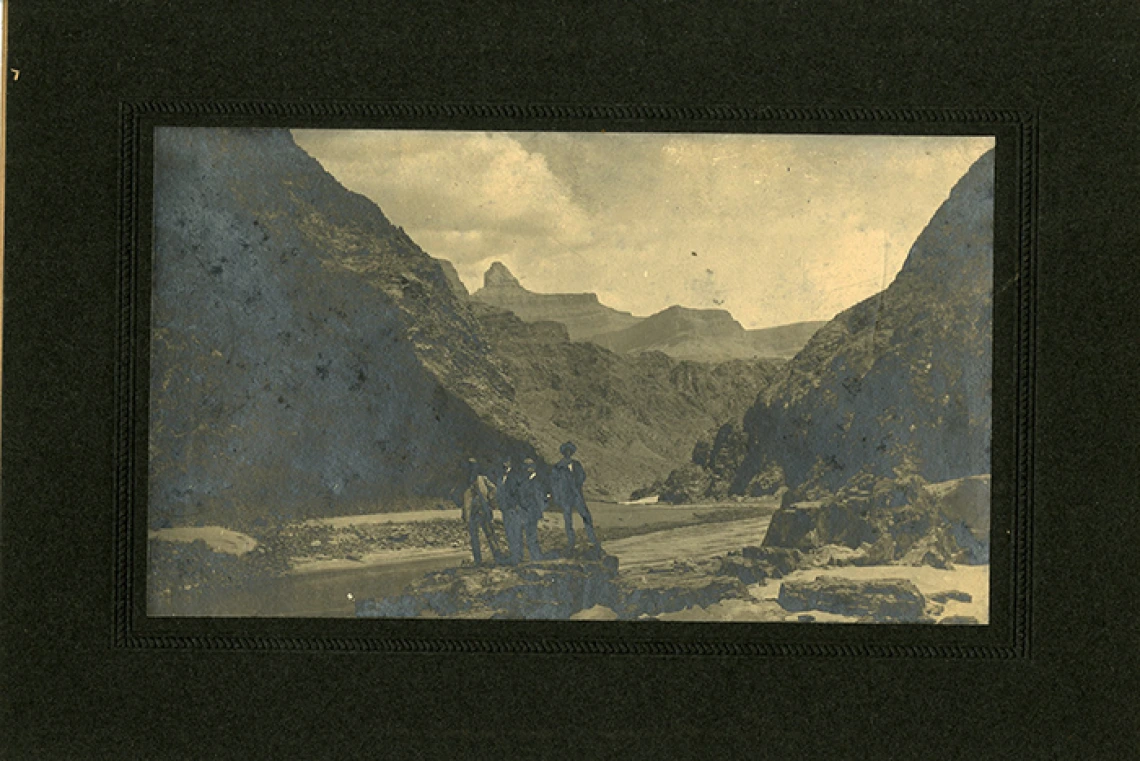George Cranston correspondence

Image of three men posing at the bottom of the Grand Canyon, 1860
Collection area: Arizona and Southwest
Collection dates: 1860-1883
This collection contains one series, correspondence. It is comprised of 57 letters, 34 of which were written by George Cranston, primarily to his sister, Gertrude. 14 of these letters relate Cranston's experiences as a soldier in the Arizona Territory, from 1866 to 1870. Cranston was stationed at Fort Yuma, Camp Lowell, Fort Grant, Camp Tubac and Camp Crittenden, and his letters reveal the privations of a soldier's life, the uncertainties of living on the frontier, and the fear of Indian attacks. Leaving the army and Arizona in 1870, the letters continue with Cranston's travels in New Mexico, Kansas and Texas. The remaining letters, the bulk of which are addressed to Gertrude, are correspondence from other Cranston siblings, and letters from James Cranston, their father. Many of these are accounts of family activities and events, others reveal some of the emotional undercurrents in family life.
Included are letters from Gertrude's fiancee, Brunson Dunning. Finally, there are a few letters in which the connection with the Cranston family cannot be determined.
Also included is a typescript of a short biography of George Cranston and a summary of many of the letters.
George Cranston was born in 1848, probably in New York state. Following an argument with his father, George was ordered to leave the family farm, and in 1866 he joined the army. Cranston's first post was Fort Yuma, Arizona Territory. In the ensuing years, Cranston was stationed at a number of sites in southern Arizona, until 1870 when he left the army's service.
Cranston went on to become a cowboy, farmer, rancher, and saloon keeper, trying his luck in Kansas, Texas, and finally Deming, New Mexico. The last letter, written in 1883, is the birth announcement of Cranston's second child written from Deming. It is unknown what became of George Cranston following 1883.
A collection guide explains what's in a collection. New to using our collections? Learn how to use a collection guide.
Collection guideAccess this collection
Visit us in person to access materials from this collection. Our materials are one-of-a-kind and require special care, so they can’t be checked out or taken home.
How to cite
Learn how to cite and use materials from Special Collections in your research.
